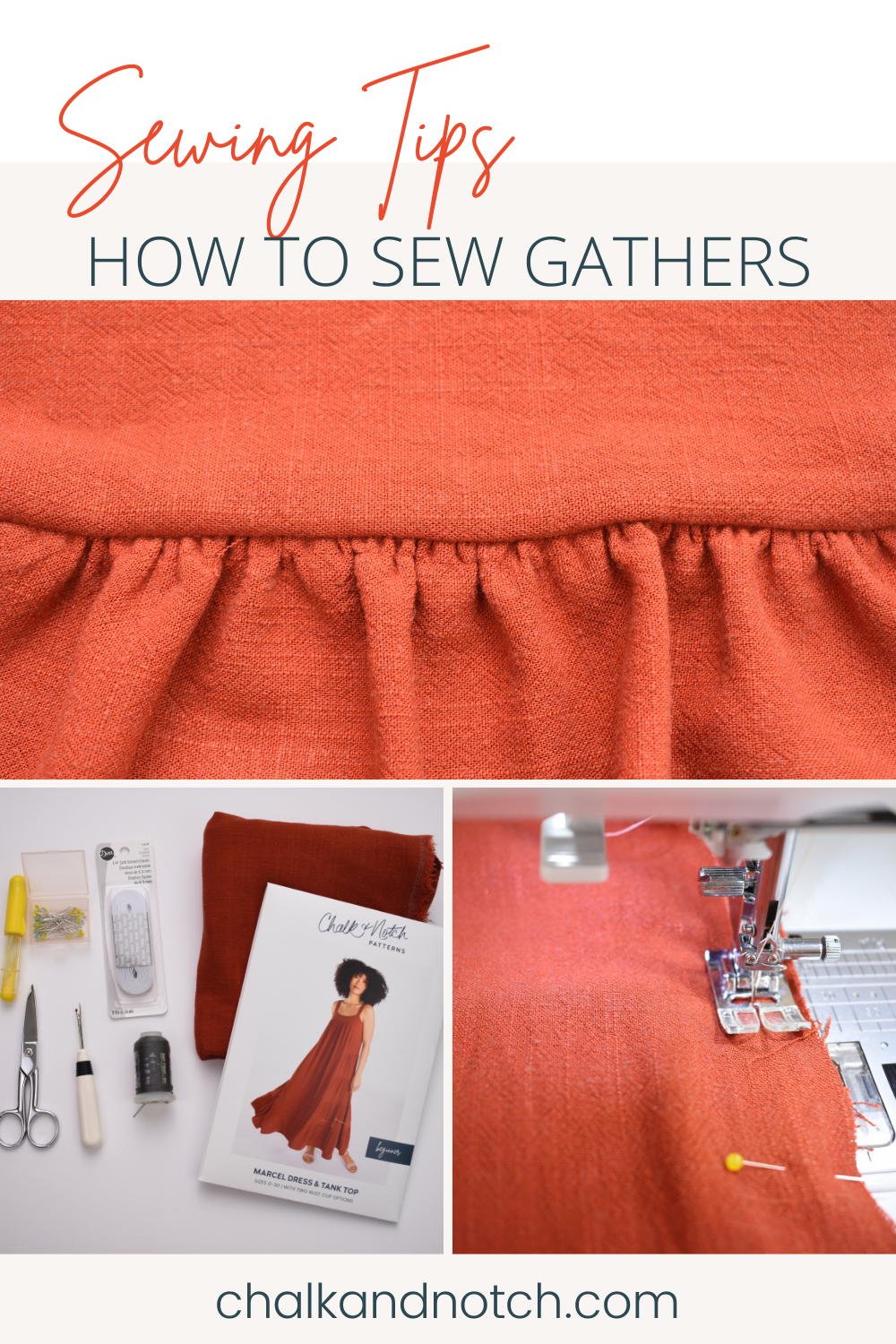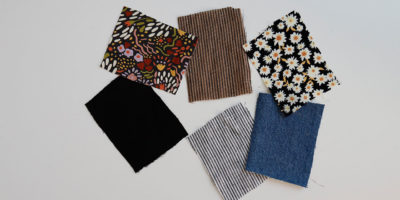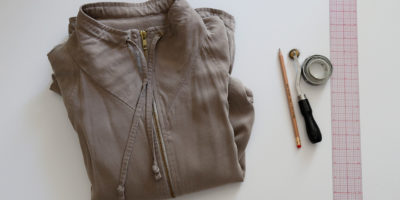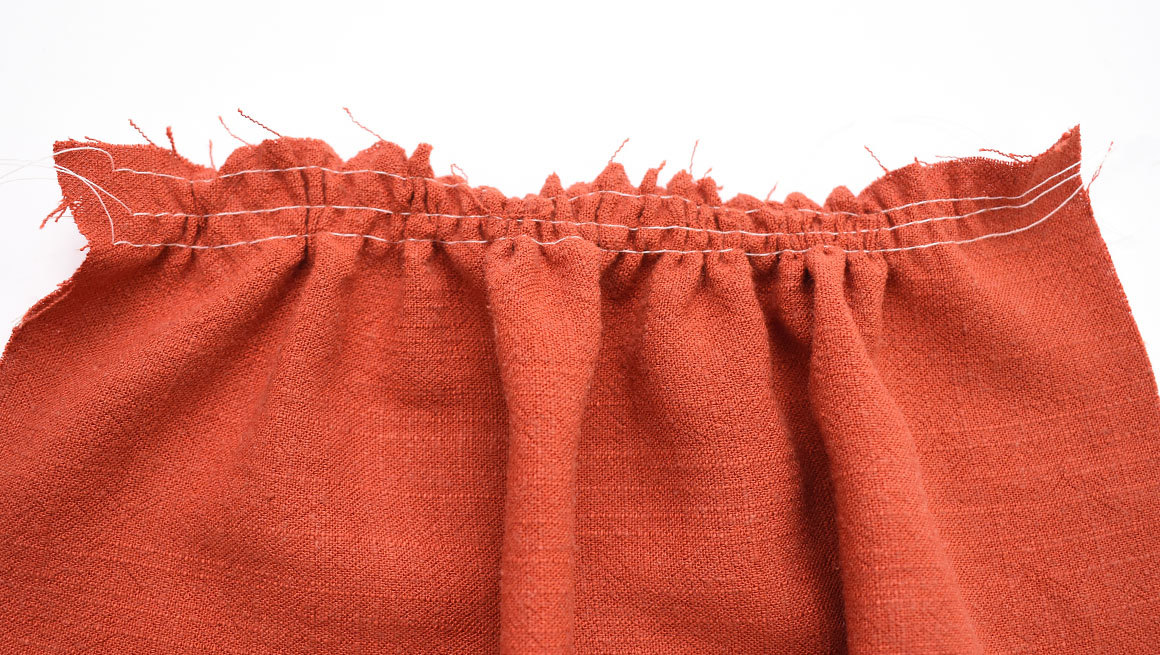
Let’s talk about gathering! Gathering is when we pull fabric along a line of stitching to create a ruffled edge that can be attached to a smaller piece of fabric. Gathering is a very common technique in garment sewing and is used in some of our patterns, including Marcel, Fringe, and Wren. In this sewing tip, we are going to demonstrate 4 different ways to evenly gather fabric to achieve beautiful full skirts, tiered dresses, full sleeves, and more!
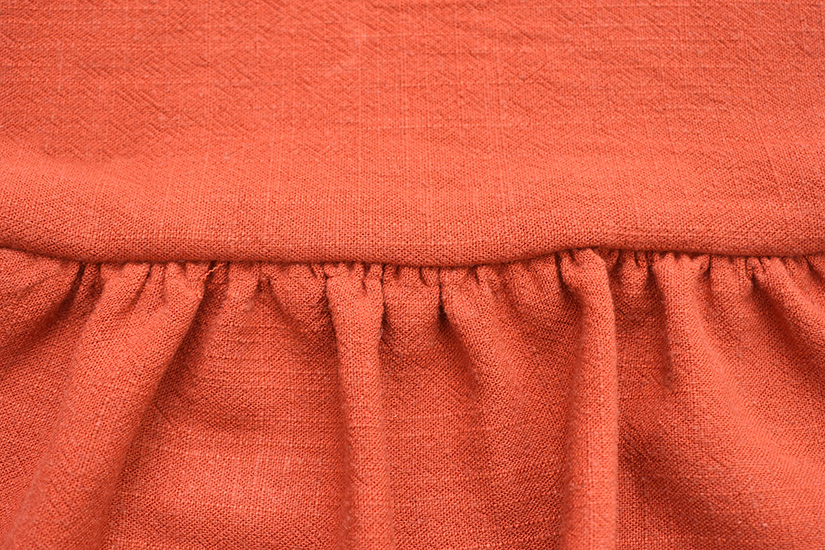
GATHERING SUPPLIES
Before we begin, here’s what you’ll need:
- A sewing pattern that requires gathering.
- Washed and pressed fabric.
- Tailor’s Chalk, Washable Fabric Marker, or pins to mark the area to be gathered. I love this chalk from Etsy.
- Pins
- Thread
- Scissors or Thread Snips
- Elastic (clear or 1/4″ braided) is optional for one of the methods.
- Dental floss, light cording, or heavy thread is optional for another method.
- Seam Ripper
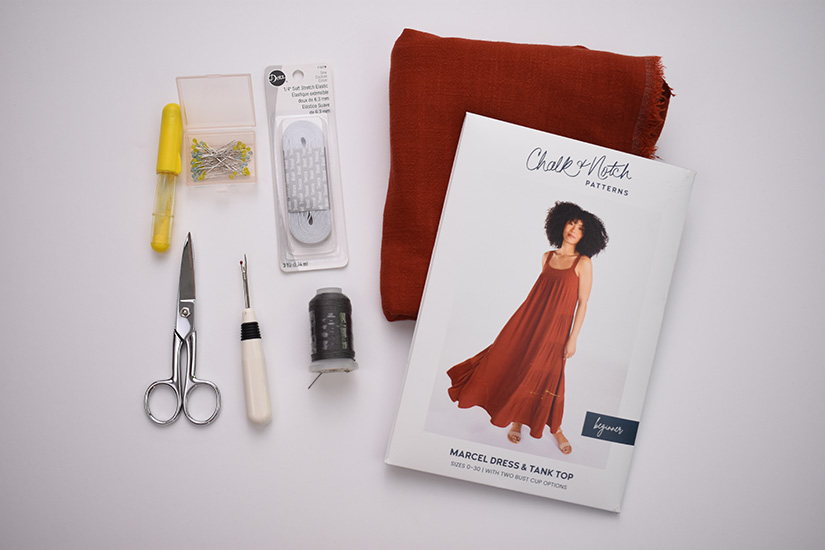
GATHERING USING BASTING STITCHES
Gathering using basting stitches is the method that is most commonly referenced in sewing pattern tutorials. This method works very well for light to medium-weight fabrics.
- To begin, increase your stitch length to the longest possible length.
- Leave long thread tails on the upper thread and the bobbin thread.
- Begin sewing a basting stitch at 1/4″ away from the raw edge of the fabric. Be sure not to backstitch at the beginning or end of your stitch line.
- Sew a second, parallel, line of basting stitches 1/8″ to 1/4″ away from the first row. Be careful that these stitching lines do not cross at any point or you will not be able to gather the fabric together.
- It is optional to add a third line of basting stitches, which can give you more control and help to keep the gathers in place and evenly spaced. If you opt to add another row of stitches, sew it 1/8″ to 1/4″ away from the second line of stitches.
- Using a contrasting thread color can help when it is time to remove your visible basting stitches from the fabric.
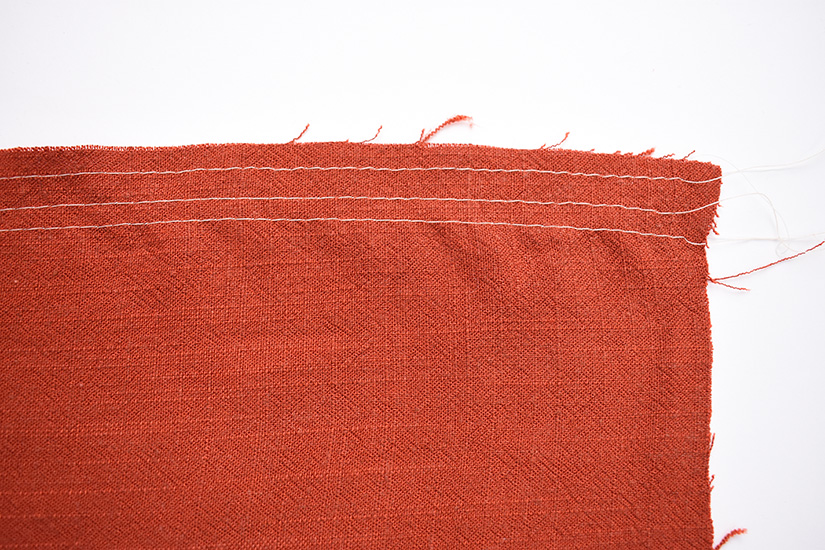
- Once you have all of your basting stitches sewn, begin to pull your bobbin threads and push the fabric toward the middle of your piece.
- You can pull from both directions to gather the fabric to your desired length.
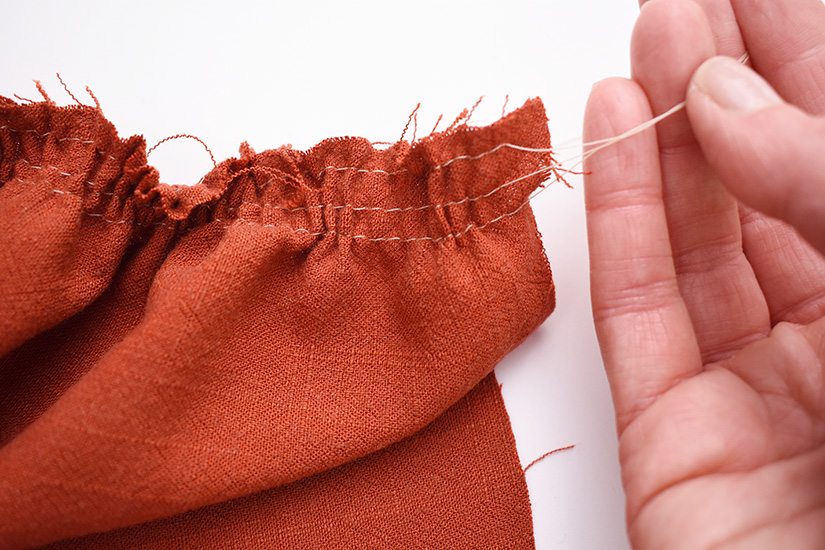
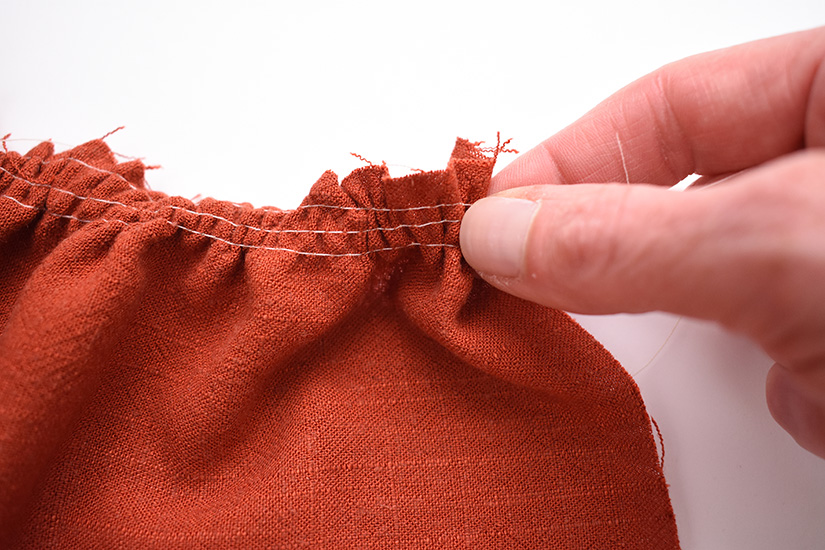
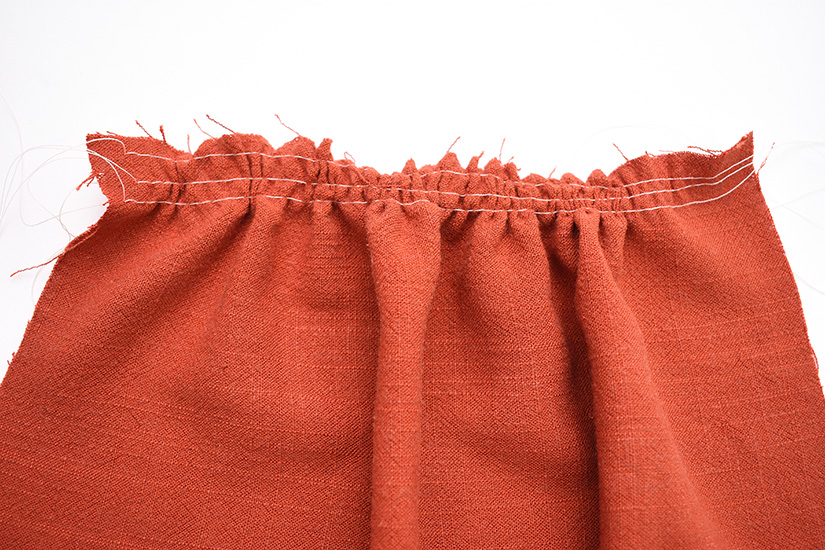
- Pin your gathered fabric to the pattern piece that it will be attached to, matching any notches or markings. Some examples of this in garment sewing could be a waistband, a tier of a skirt, or an armhole.
- To secure the gathering threads, place a pin and wind the tails around it in a figure-eight pattern.
- Adjust your gathers so that they are even along the length of your pattern piece, pinning at regular intervals.
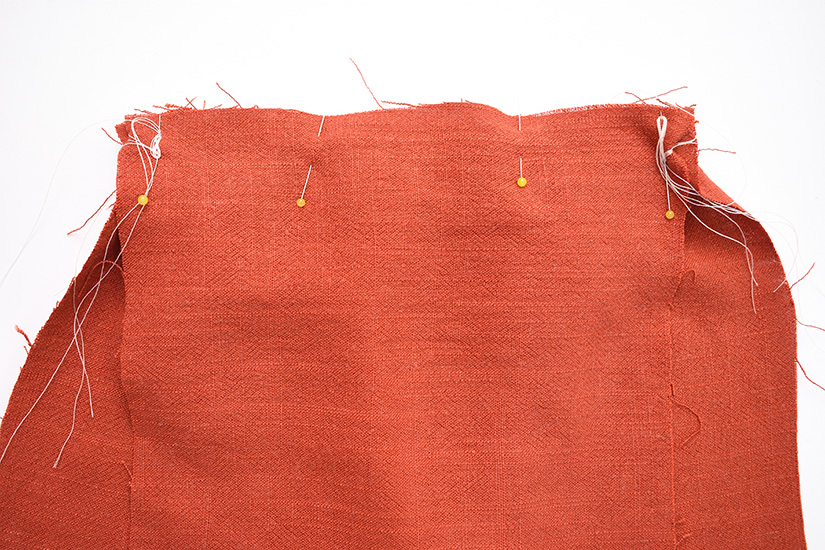
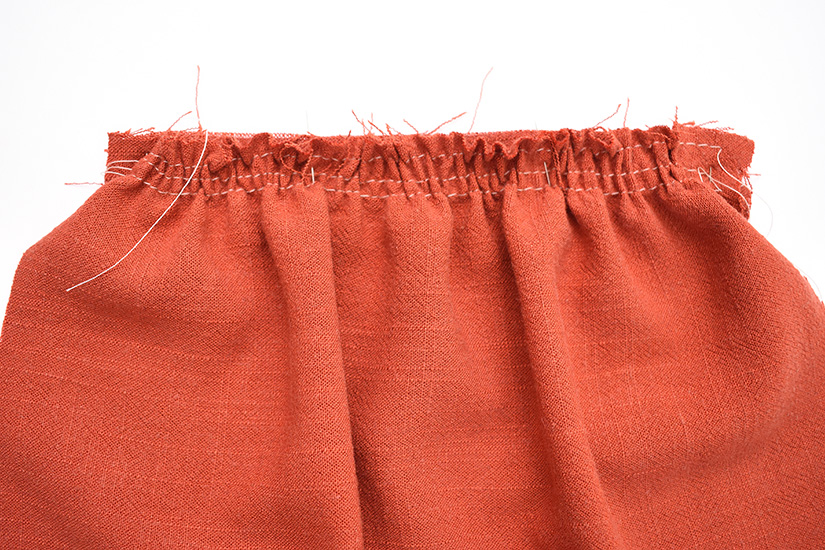
- Before you sew your two pieces of fabric together, return your sewing machine to the normal stitch length.
- Sew your seam between two lines of basting stitches, which will make removing the visible basting stitches easier.
- Adjust your gathers as you sew and keep the fabric straight to avoid any puckering or bunching from below the basting stitches.
- Remove any visible basting stitches.
- Finish your seam allowance as desired.
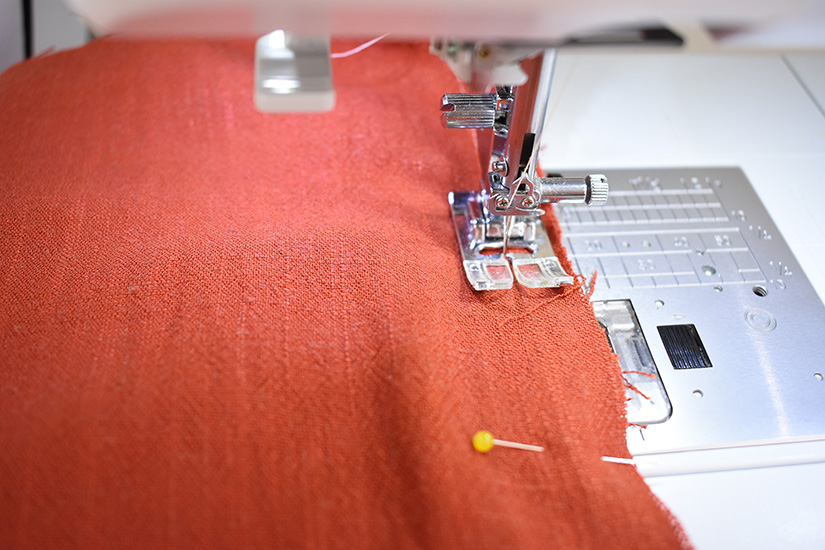
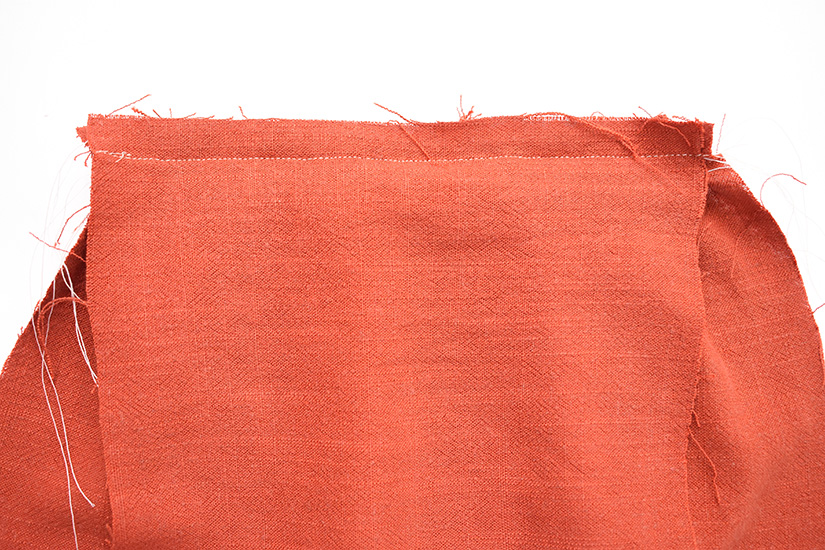
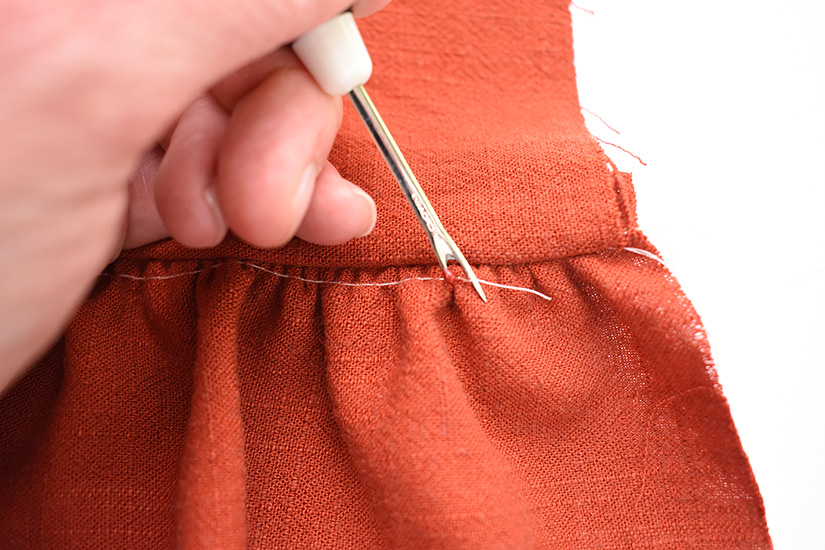
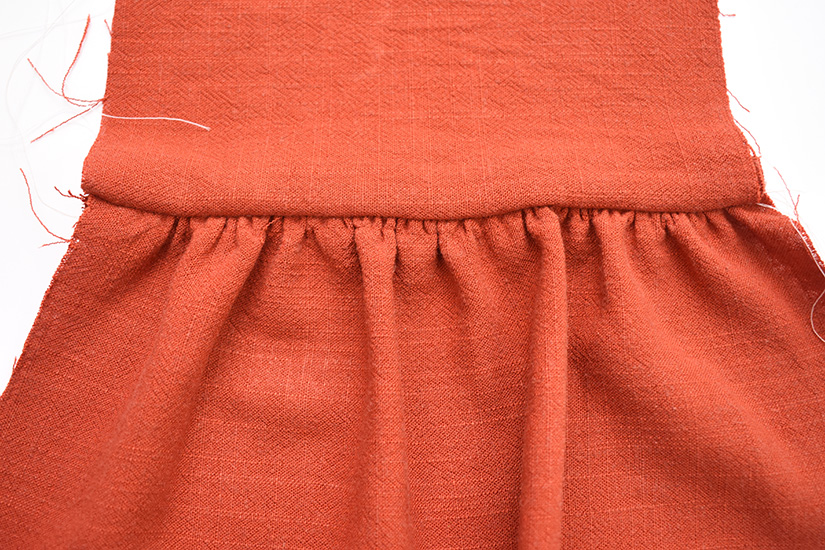
GATHERING WITH A ZIG ZAG STITCH
This way to gather fabric is a great option to use for heavier-weight fabrics where regular thread might break when it is pulled. This method of gathering requires a piece of heavier thread, a lightweight piece of cording, or dental floss.
- Set your machine to a wide zig-zag stitch with a longer stitch length. I used 3.5 width and 2.0 length in this example.
- Zig-Zag over a piece of heavier thread, cord, or floss being careful not to stitch on top of the heavier thread. With this method, it is optional to backstitch at the beginning and end of your zig-zag stitching. Optionally, you can stitch the zig-zag first and thread the cording through afterward.
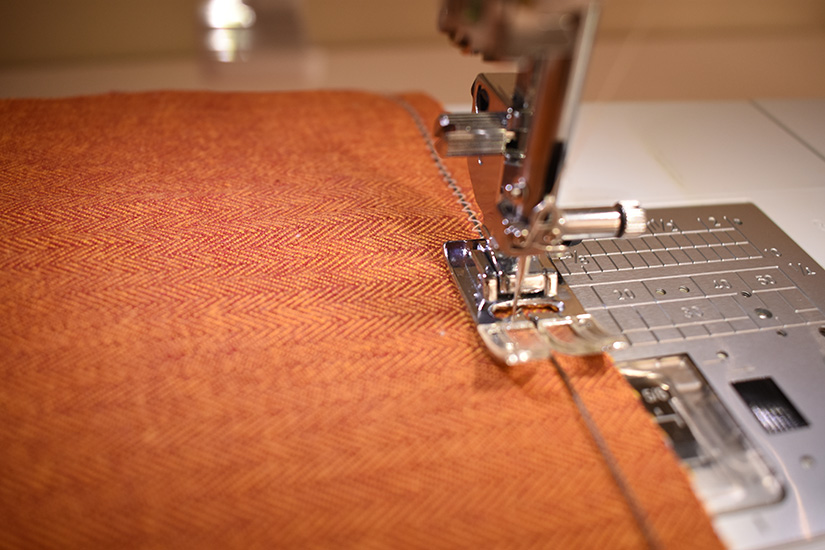
- Secure one end of the heavy thread, cord, or floss with a figure eight on a pin so that it doesn’t pull out during gathering.
- Pull from the other end of the thread, cord, or floss to create your desired amount of gathers in the fabric.
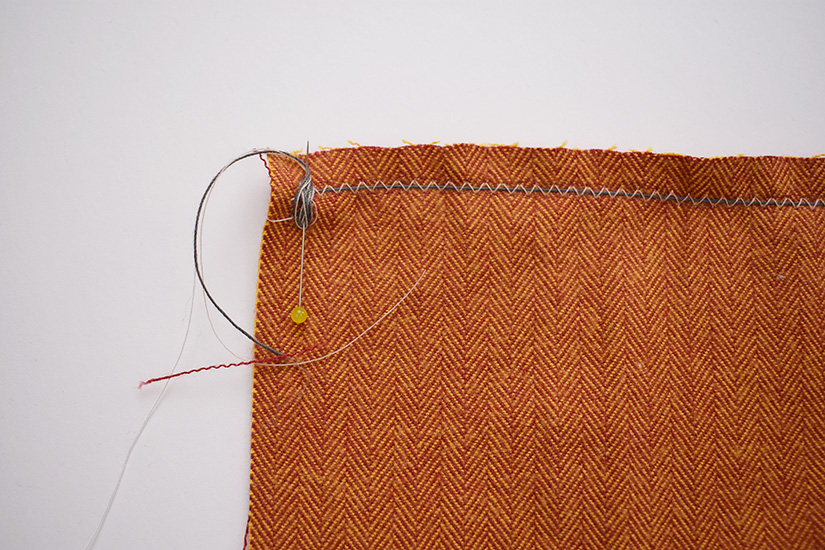
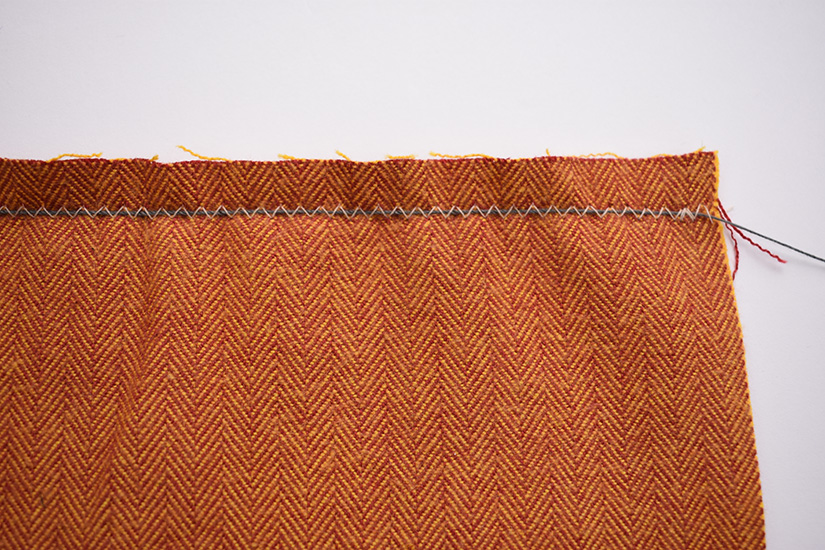
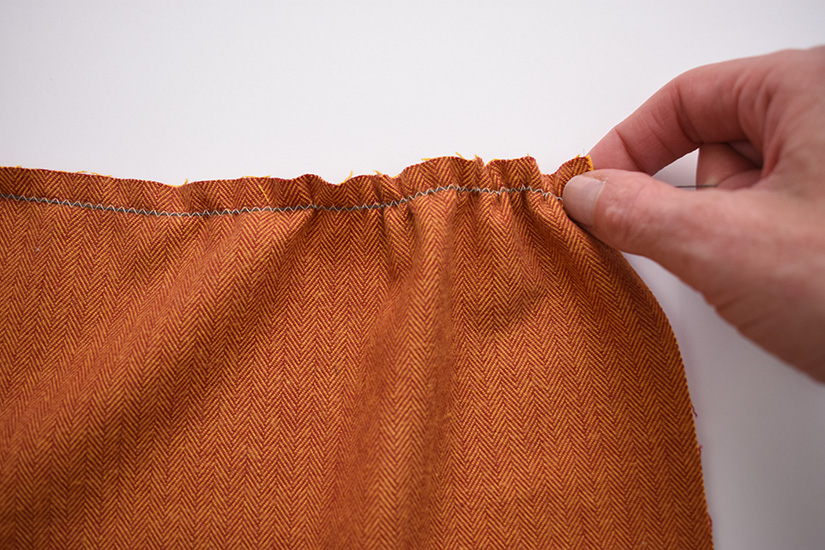
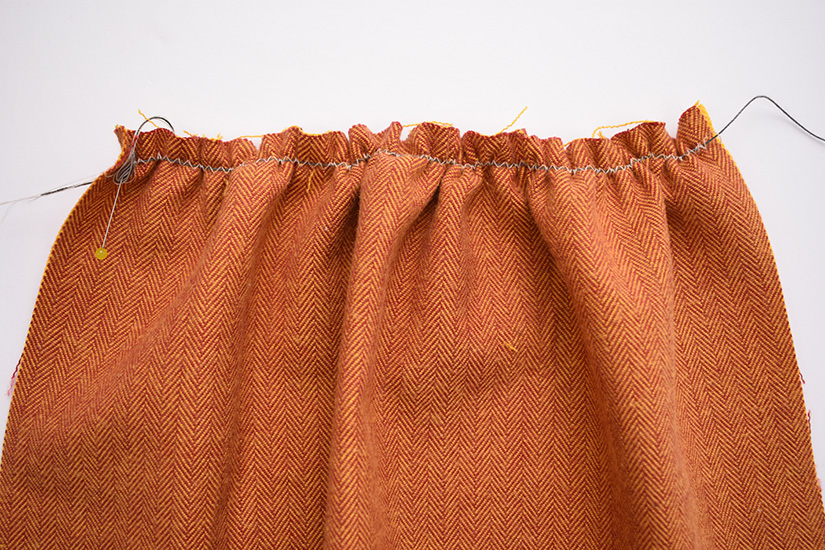
GATHERING USING ELASTIC
A great way to create perfectly even gathers is to use elastic to cinch the fabric. Clear or regular braided elastic both work for this method, just be sure that the elastic is narrower than the seam allowance of your pattern.
- On your elastic, mark the length that your fabric should be when it is gathered.
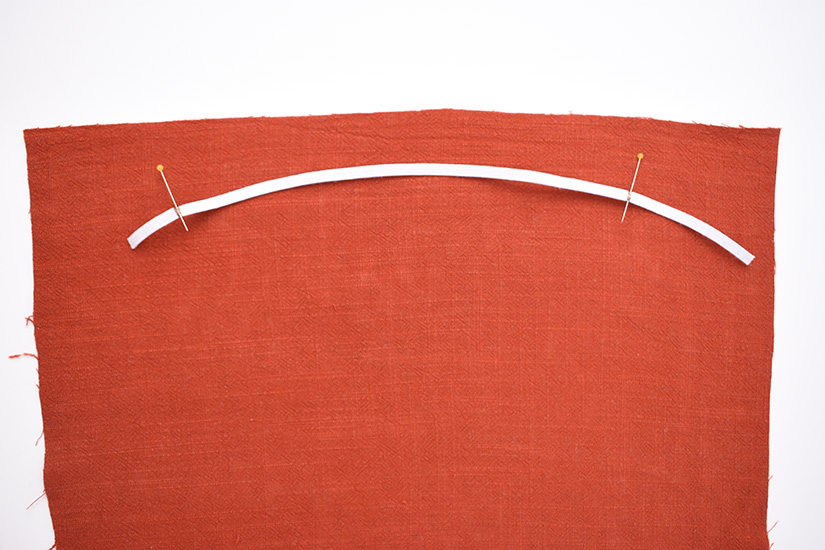
- I find it helpful to pin both ends of the elastic to the length of fabric to be gathered. I also put a pin in the middle of the elastic and the middle of the fabric to make the area to be gathered into two smaller sections. If you are gathering a long length of fabric you may also wish to put pins at quarter marks.
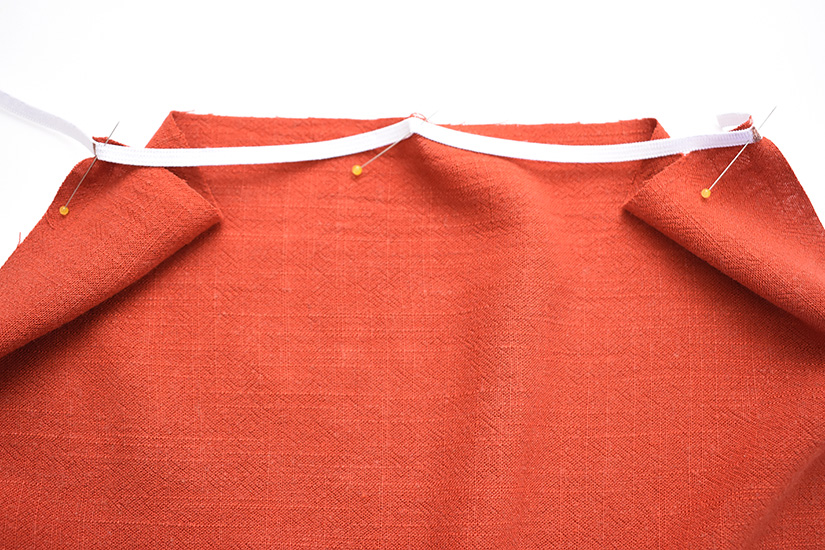
- Place the fabric with the elastic on top under the presser foot of your machine and lower the needle. Stretch the elastic to the other end of the fabric and sew along the length of the elastic. When gathering using elastic you do need to backstitch at the beginning and end of your seam. Continue stretching the elastic as you sew.
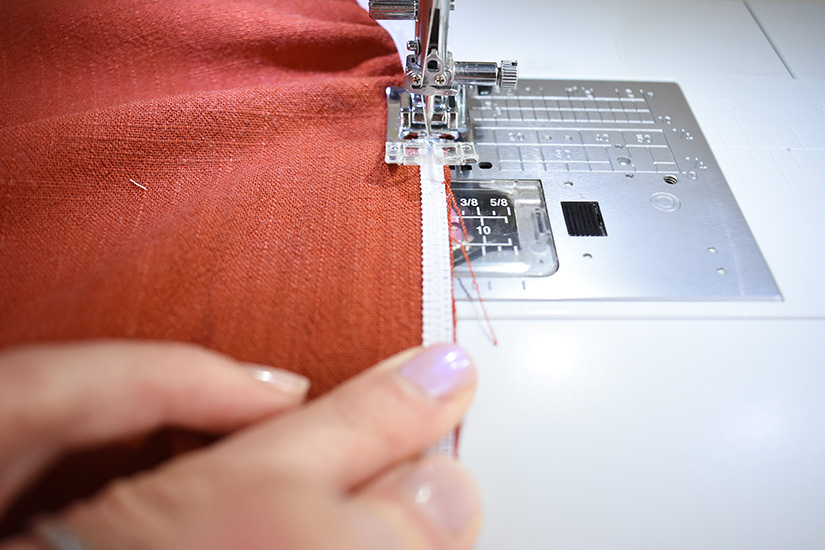
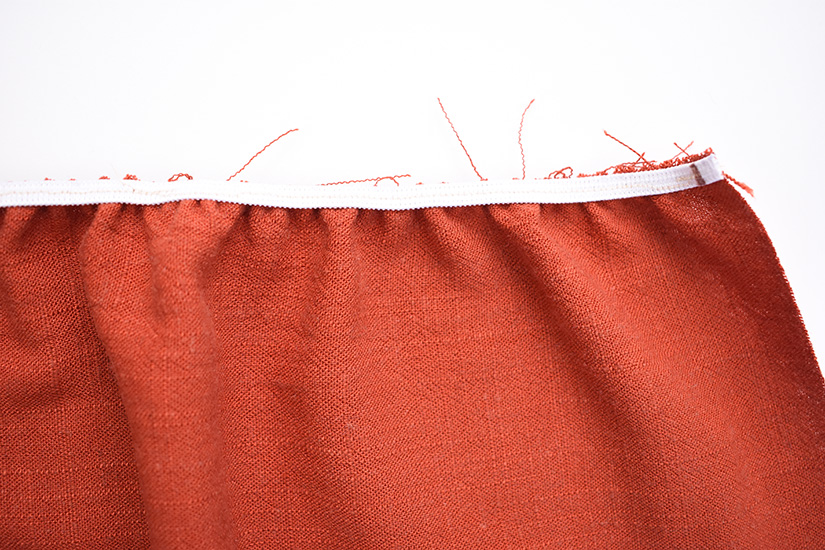
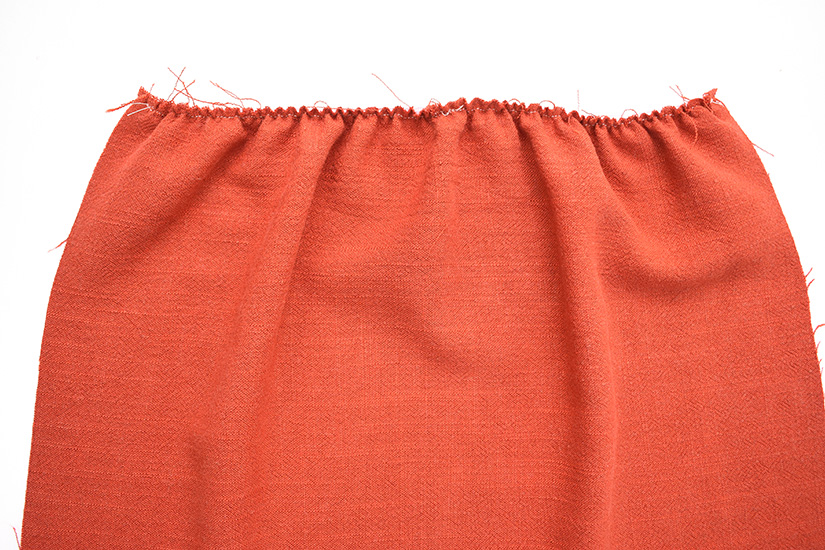
GATHERING USING A SERGER
If you have a serger, you can use it instead of sewing multiple rows of basting stitches along the top of your fabric. You will need to make a few setting changes to your serger settings for this technique.
- Set your serger for 4 thread overlock. In these photos I used white threads in my needles and black threads in my loopers to make it easier to identifiy the threads that will be pulled to gather the fabric.
- If your serger has a differential feed, increase it to the highest number.
- Increase your stitch length to the highest number.
- Start with a long thread chain coming out of your serger.
- Serge along the raw edge of the fabric. If you have adjusted your differential feed, the machine will gather the fabric a bit as you serge.
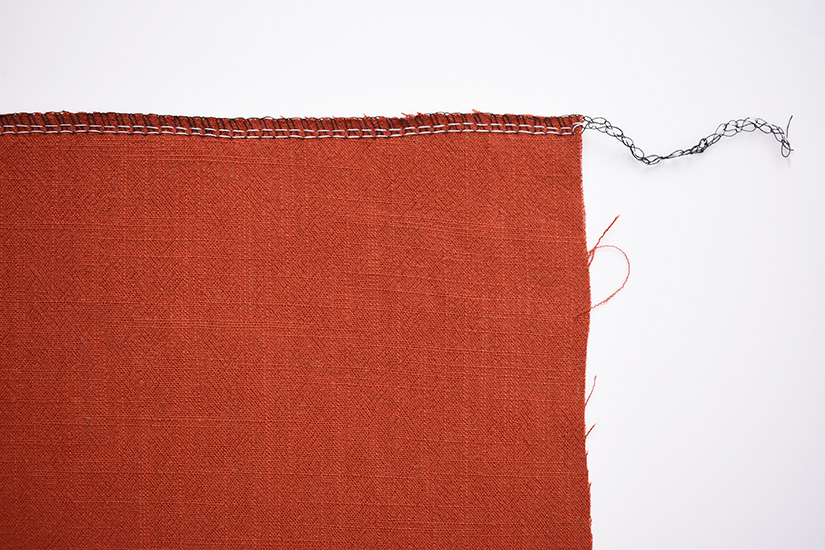
- Leave long thread chains at the end of your stitching. Separate out the two needle threads from the looper threads in the chain of stitching. The needle threads are the two parallel lines of stitching that hold the looper threads in place.
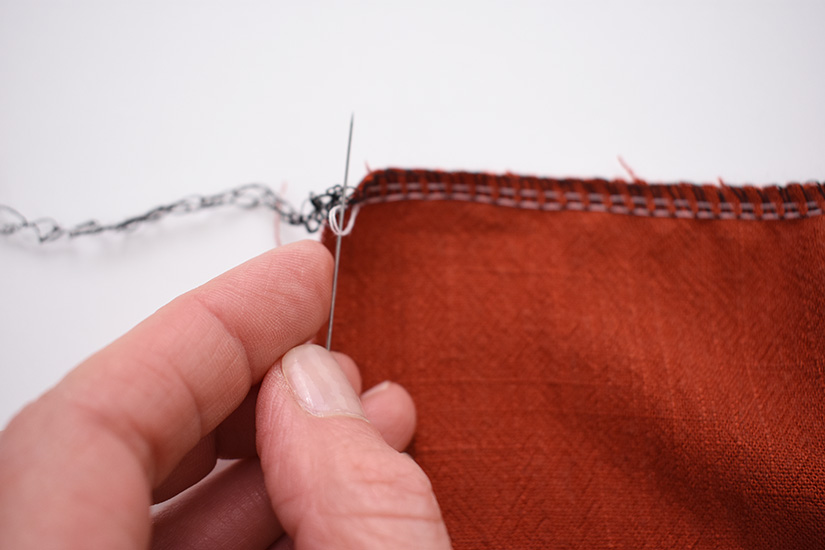
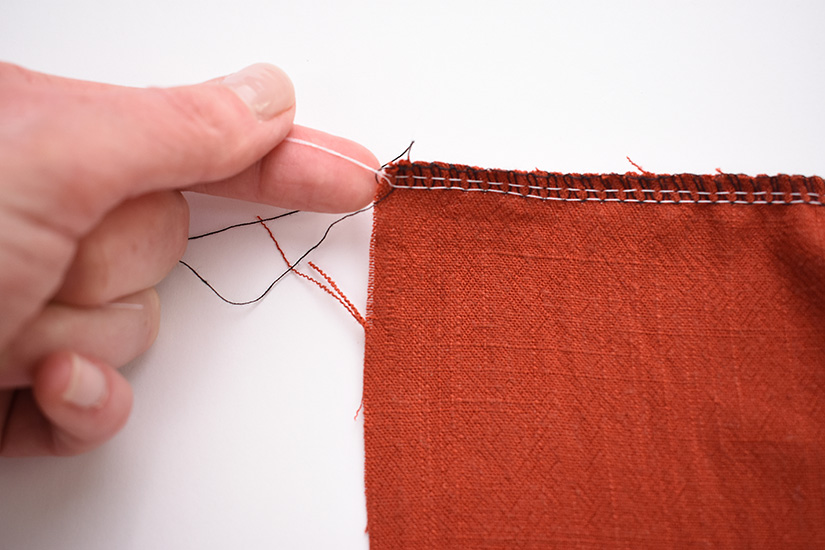
- Pull the needle threads to gather the fabric.
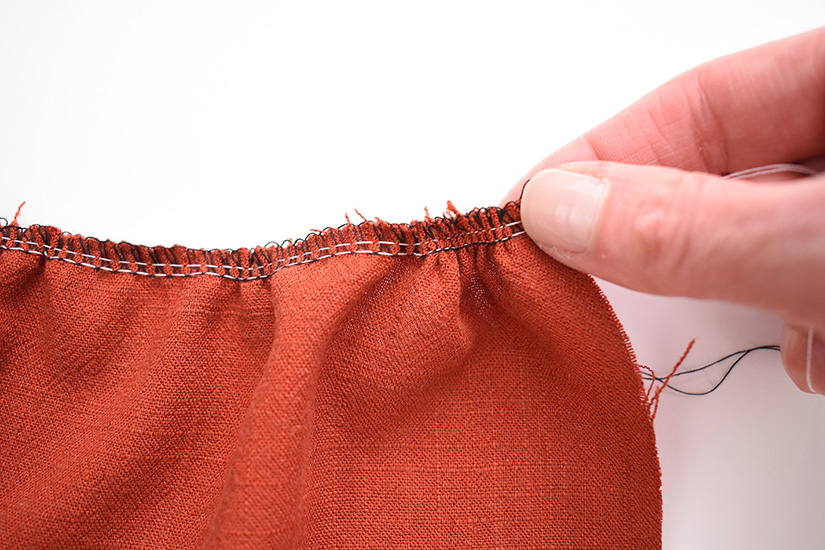
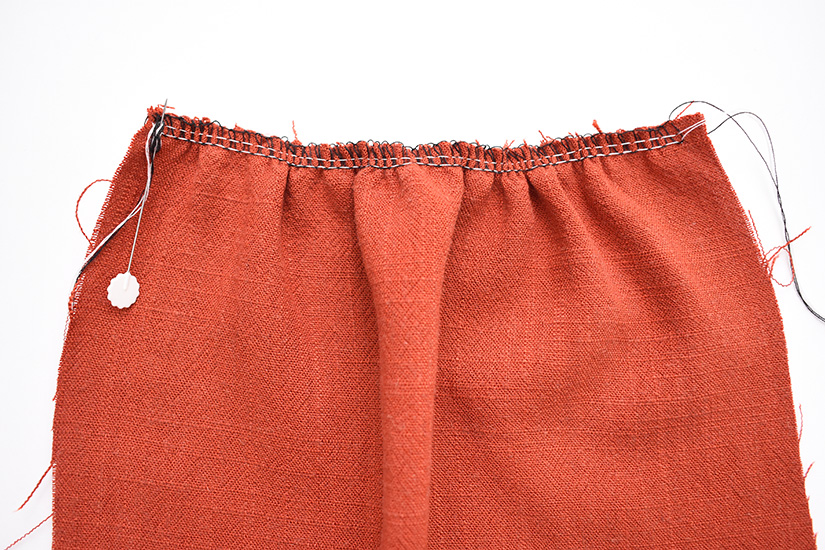
We hope these tips are helpful and you’re ready to sew some beautiful gathers!

